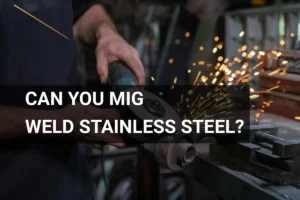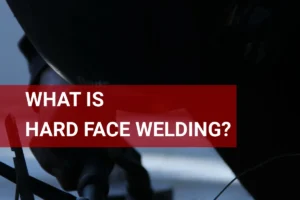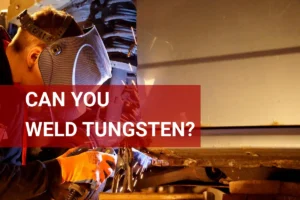What Size Tungsten for TIG Welding? Discover Types, Selection Tips, and Common Issues
Published on: May 26, 2025 | Last modified: March 4, 2025
By: Joe Carter
Tungsten wire is a metal known for its exceptional strength and resistance to high temperatures. It’s a key component in TIG welding, where it helps create an electric arc.
Now, let’s dive into the question, what size tungsten for tig welding? Understanding the right size is crucial because it significantly affects your weld quality. From my experience, using the correct tungsten helps maintain a clean arc and prevents unwanted issues like cracking.
In this article, we’ll cover various aspects of what size tungsten for tig welding, including how tungsten size works, types of tungsten electrodes, steps to pick the right size, factors that influence your choice, common problems to look out for, care tips, and applications you should know about. You’ll also learn about alternatives to selecting tungsten size and find answers to frequently asked questions.
Contents
- What Size Tungsten for TIG Welding?
- How Does Tungsten Size for TIG Welding Work?
- Types Of Tungsten Electrodes
- Steps to Choose the Right Tungsten Size
- Typical Problems to Be Aware Of
- Factors Influencing Tungsten Size Selection
- Tips for Optimizing Tungsten Performance in TIG Welding
- Applications You Should Know About
- Are There Any Alternatives to Selecting Tungsten Size?
- Frequently Asked Questions (FAQs)
- Conclusion
- Additional Reading
What Size Tungsten for TIG Welding?
Tungsten size affects arc stability and heat input. For thin materials, use 1/16 in (1.6 Mm) or less; for thicker metals, choose 3/32 in (2.4 Mm) or 1/8 in (3.2 Mm). It’s used in applications like stainless steel and aluminum welding.
How Does Tungsten Size for TIG Welding Work?
The size of the tungsten electrode is crucial in TIG welding. Tungsten wire comes in various diameters, typically from 0.040 inches (1.0 Mm) to 3/16 inches (4.8 Mm). The size you choose depends on the material thickness you’re welding. For example, a 1/16 inch (1.6 Mm) tungsten works best for materials up to 1/8 inch (3.2 Mm) thick.
It’s essential to match the tungsten size to your project. A small electrode heats faster, which is ideal for thin materials like aluminum. A larger tungsten can handle higher amperages, making it suitable for thicker materials. Using the right size improves arc stability and leads to cleaner welds.
I recommend using a 1/16 inch (1.6 Mm) tungsten for most aluminum projects. It provides precise control while heating without excessive penetration. If you’re unsure, consult a tungsten electrode size chart to match your specific needs and material thickness.
Types Of Tungsten Electrodes
-
Pure Tungsten Electrode
This type is made of 99.5% tungsten, providing excellent arc stability. For TIG welding, a size of 1/16 inch (1.6 Mm) is recommended. Choose the size based on your welding application; 1/16 inch works better for thin materials for a more stable arc.
Understanding different welding techniques can also enhance the quality of your welds, such as learning what a hot pass in welding is and how it integrates into the welding process.
-
Thoriated Tungsten Electrode
These rods contain thorium, which enhances their current-carrying capacity. A common size is 3/32 inch (2.4 Mm) for various metals. Check the amperage; larger welds require a bigger size for optimal performance. Understanding the differences in welding positions such as 1F 2F 3F 4F welding can significantly affect your welding technique and outcomes.
-
Lanthanated Tungsten Electrode
This electrode features lanthanum oxide, improving longevity and arc stability. A size of 1/16 inch (1.6 Mm) is suitable for most applications. Match the size with your duty cycle; larger sizes perform better under increased heat.
-
Rare Earth Tungsten Electrode
These electrodes combine multiple rare earth elements for versatility. A popular size for medium welding jobs is 3/32 inch (2.4 Mm). Check material thickness; thicker metals require a larger size for effective penetration.
-
Ceriated Tungsten Electrode
This type includes cerium oxide, which enhances ignition and performance. Generally, a size of 1/16 inch (1.6 Mm) is suitable for thinner materials. Assess your task’s requirements; larger sizes work better for higher amperage.
You should now have a good understanding of the various tungsten electrode types. In the next part, we’ll discuss how to select the appropriate tungsten size.
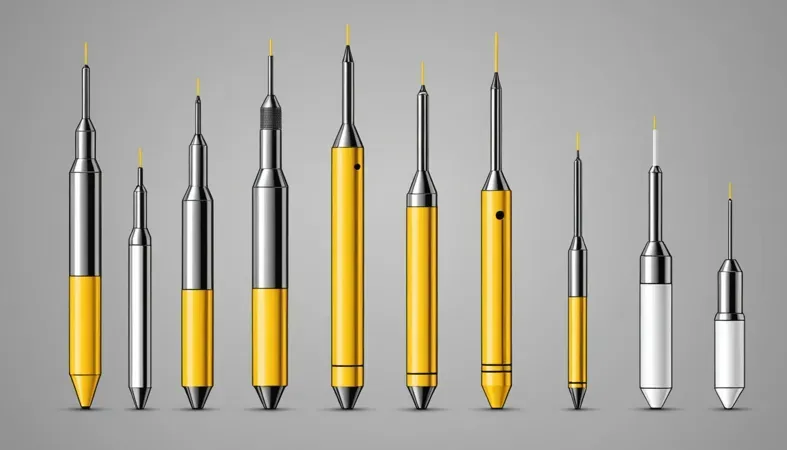
Steps to Choose the Right Tungsten Size
Here are steps to find the right tungsten size for TIG welding.
-
Assess Material Thickness
Identify the thickness of the material you’ll be welding. Use a diameter of 1/16 inch (1.6 Mm) for materials up to 1/8 inch (3.2 Mm) thick. For thicker materials, increase the tungsten size by 1/16 inch (1.6 Mm) for every 1/8 inch (3.2 Mm) of thickness. For instance, for 1/2 inch (12.7 Mm) steel, use a 1/8 inch (3.2 Mm) tungsten electrode. Understanding different welding processes can also help you choose the right equipment for your project.
Ensuring that welding professionals can undergo diagnostic imaging safely is crucial, which raises the question, can a welder get an MRI.
After determining the thickness, consider the welding type. For example, if you’re welding aluminum, a larger diameter like 3/32 inch (2.4 Mm) helps maintain heat control. Covering both thickness and welding type is crucial.
-
Choose Tungsten Type
Decide which tungsten electrode suits your welding needs. Pure tungsten is for DC welding, while Thoriated tungsten is for AC, often used in TIG welding. I recommend Lanthanated tungsten for better arc stability, especially when welding stainless steel.
Hafnium dioxide also works well for TIG welding, offering excellent results without radioactivity. Choose based on your welding type, as each tungsten variant has unique properties affecting your welds.
If you’re looking to procure the right materials for your welds, the right source can be essential; explore where to buy metal for welding.
-
Match to TIG Current Settings
Mismatching tungsten size with current settings can lead to poor performance. For example, a diameter of 1/16 inch (1.6 Mm) supports around 20-100 amps at optimal performance. If you exceed this range with a small tungsten, it may melt or degrade quickly.
If you’re welding thick aluminum at 200 amps, use a larger tungsten, like 3/32 inch (2.4 Mm), which can handle up to 200 amps effectively. Monitor your settings to ensure your tungsten can manage the current.
Exploring different welding methods is crucial to finding the right tools for your projects, especially when considering the investment in specialized equipment like a laser welder.
-
Consider Electrode Length
Electrode length is crucial for your welds. A longer tungsten allows for reach but can make heat control challenging. Typically, I suggest a length of 7 inches (178 Mm) for comfortable welding without increased contamination risk. It’s also important to consider the advantages of using a DC inverter welding machine in conjunction with your electrode choice.
Remember how far the tungsten protrudes beyond the cup. Keeping it about 1/8 inch (3.2 Mm) minimizes heat loss and maintains an effective weld pool. Pay attention to length to keep your welds clean.
We’ve wrapped up the key steps for selecting the correct tungsten size. Next up, we’ll look at common issues to consider.
Typical Problems to Be Aware Of
Now, let’s look at specific issues with tungsten wire.
-
Electrode Contamination
Tungsten wire can become contaminated by oils or dirt from your hands. Check the arc’s stability to spot this issue. Clean the tungsten wire with a pad or acetone to resolve it.
-
Incorrect Electrode Size
Using the wrong diameter tungsten wire alters the arc. For thin materials, use 1/16” (1.6 Mm) to avoid burning through. Check your material thickness for proper size selection.
-
Poor Arc Stability
If tungsten wire doesn’t maintain a consistent arc, check the sharpness; dull tips cause instability. Sharpen or regrind to fix this quickly!
-
Electrode Erosion
Tungsten wire erodes from prolonged use or high amperage. Monitor the size regularly. Replace it if the tip reduces below 1/8” (3.2 Mm) to ensure proper performance.
-
Arc Length Issues
An arc that’s too long or too short can disrupt your weld. An arc length of 3/16” (5 Mm) is ideal. Adjust while welding to maintain this distance for the best results!
That covers common issues to consider. Let’s now take a look at the aspects affecting tungsten size selection.
Factors Influencing Tungsten Size Selection
What factors impact your choice of tungsten size for TIG welding?
-
Welding Current
The welding current directly influences tungsten size. Higher currents, over 200 amps, require larger tungsten diameters, like 3.2 mm (1/8 Inch), to prevent melting.
-
Material Type
Different materials require different tungsten types. For stainless steel, use a 2.4 mm (3/32 Inch) tungsten for excellent arc stability.
-
Electrode Diameter
Match your tungsten diameter to your material thickness. For materials around 3 mm (1/8 Inch) thick, a 2.4 mm (3/32 Inch) tungsten is best.
-
Weld Joint Design
A tighter joint design restricts heat flow, needing a smaller tungsten. Wider joints benefit from larger tungsten for proper heat distribution.
-
Cooling Requirements
In high-frequency applications, proper cooling is crucial. Larger tungsten dissipates heat better, preventing electrode damage under high loads.
We covered factors impacting tungsten size selection. Next, we will cover tips for enhancing tungsten performance in TIG welding.
Tips for Optimizing Tungsten Performance in TIG Welding
Want to enhance your TIG welding results? Here are some expert tips to optimize your tungsten performance.
Understanding Amperage and Duty Cycle
Your choice of tungsten size should align with the amperage and duty cycle. Here’s a handy guide:
| Tungsten Size | Maximum Amperage | Recommended Duty Cycle |
|---|---|---|
| 1/16 in (1.6 mm) | 125 A | 60% |
| 3/32 in (2.4 mm) | 200 A | 100% |
| 1/8 in (3.2 mm) | 300 A | 100% |
Crucial Proximity to Workpiece
Maintain an appropriate stick-out length. Ideally, aim for around 1/8 inch (3.2 mm) protrusion. This keeps heat focused and prevents excess contamination.
Cooling Enhancements
If you’re using larger tungsten sizes, cooling becomes vital. Consider switching to a water-cooled torch in high-amperage situations, which helps manage heat more effectively.
Electrode Preparation
Regularly crack the tip of the tungsten to maintain sharpness. A pointed tip is essential for precision. If you find rounding, it’s time to regrind or replace.
Follow these tips to take your TIG welding to the next level, ensuring high-quality, clean welds every time! You’ll definitely notice the difference.
Applications You Should Know About
People use tungsten for innovative welding projects, but it has many other applications, such as:
- Aerospace Components: Using 2% thoriated tungsten allows you to weld thin metal sections. It offers excellent arc stability, which makes it popular in aircraft fabrication.
- Automotive Repairs: A 1.5% lanthanated tungsten is effective for welding aluminum. Its versatility is crucial for frame and body repairs, making it a go-to for mechanics.
- Artistic Metalwork: Artists often use 0.5% cerium tungsten for ornamental pieces. This type helps create clean, precise beads, essential for detailed designs.
- Marine Applications: Pure tungsten is commonly used for stainless steel welds in boat manufacturing. Its resistance to contamination leads to durable, corrosion-resistant welds.
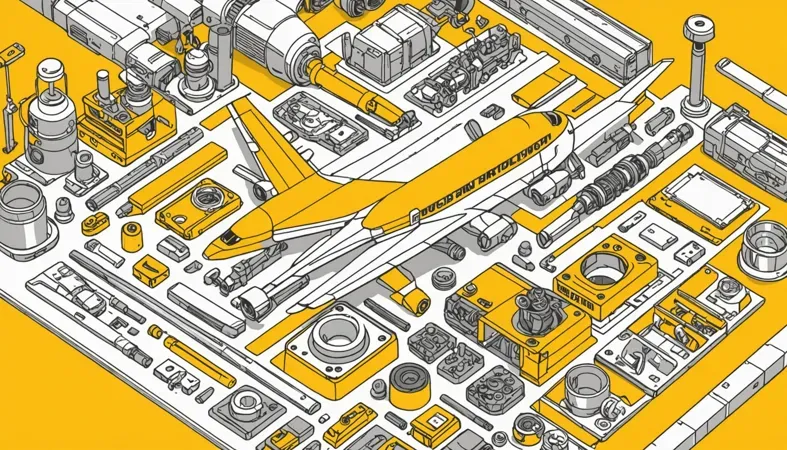
Are There Any Alternatives to Selecting Tungsten Size?
There sure are! You can utilize different tungsten types, such as thoriated or lanthanated tungsten, for various applications. I’ve found that these options can enhance arc stability and improve performance under certain conditions, especially when dealing with thicker materials.
Additionally, experimenting with various diameters can lead to better results in specialized situations. If you’re working with aluminum, knowing how to ball tungsten properly can also make a difference. So, consider the context of your project—sometimes, it’s about the approach, not just the size!
Frequently Asked Questions (FAQs)
Now let us look at some questions I typically get asked.
What is the Best Size Tungsten for TIG Welding?
Yes, the best size tungsten for TIG welding depends on the amperage you’ll use. Generally, 1/16 in (1.6 Mm) is great for up to 125 A (Amps), while 3/32 in (2.4 Mm) fits well for 150-200 A.
What Color Tungsten for Welding Stainless Steel?
The color tungsten for welding stainless steel is usually green, indicating it’s made from 2% thorium. Thorium helps create a stable and consistent arc, enhancing your weld quality.
How Many Amps Can 1/16 Tungsten Handle?
1/16 in (1.6 Mm) tungsten can handle up to 125 A. This makes it suitable for thinner materials, but exceeding the amp limit can lead to overheating.
How Do I Know What Size Cup to Use for TIG Welding?
To know what size cup to use for TIG welding, consider your tungsten diameter and the type of work. A larger cup provides better shielding gas coverage but may require higher gas flow. For example, a #5 cup works nicely for 1/16 in tungsten. Understanding these variables prepares you for welding thin materials where specific techniques are essential. For further details on welding sheet metal, check out how to weld sheet metal.
How to Choose the Right Tungsten for TIG Welding?
Choosing the right tungsten for TIG welding means understanding the material and amperage. For aluminum, use pure tungsten, while for steel, a 2% thoriated tungsten works best. Always match the tungsten to your project’s needs.
How to Sharpen Tungsten for TIG Welding?
To sharpen tungsten for TIG welding, use a dedicated tungsten grinder or a grinding wheel with a 60-grit. Keep the tip pointed at a 15-degree angle for a clean, effective arc. Properly sharpened tungsten ensures a stable arc every time.
Conclusion
I hope this was worth your while. We covered what size tungsten for TIG welding, how tungsten size works, types of tungsten electrodes, steps to choose the right tungsten, factors influencing size selection, common problems, aftercare tips, and key applications. Plus, we looked at possible alternatives and answered some frequently asked questions.
So, what size tungsten for TIG welding? Generally, for 1/16 inch (1.6 Mm) to 1/8 inch (3.2 Mm) materials, use 1/16 inch (1.6 Mm) tungsten. For thicker materials, go for 3/32 inch (2.4 Mm) or even 1/8 inch (3.2 Mm). Remember to choose the right color and type of tungsten based on the metal you’re welding, whether it’s aluminum or stainless steel. That’ll ensure good performance every time.
For additional insights and guidance on welding techniques, you can explore What is Welding.
Additional Reading
- ISO. (2017). ISO 3834: Quality Requirements for Fusion Welding of Metallic Materials. Geneva, Switzerland: ISO.
- Little, R. L. (1999). Welding and Welding Technology. New York, NY: McGraw-Hill Education.
Joe Carter is a retired welding professional with over 40 years of hands-on experience in the industry, spanning ship repair, structural welding, and even underwater projects. Joe is a master of MIG, TIG, and Stick welding. Passionate about mentoring the next generation of welders, Joe now shares his decades of expertise and practical insights to help others build rewarding careers in welding.
Aluminum Welding, Arc Stability, Fabrication, TIG Welding, Tungsten Electrodes, Tungsten Size Selection, Welding, Welding Materials, Welding Techniques, Welding Tips

